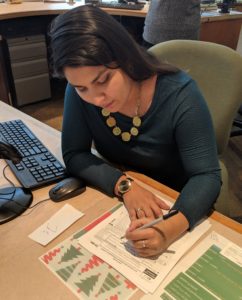 Here is some simple advice about the 990 form and nonprofits. First thing to know, if you are a tax-exempt nonprofit (501c3) and you want the IRS to strip you of your tax-exempt status, don’t file a Form 990 with the IRS for three consecutive years, that is sure to get you in trouble. (The one caveat is that churches with their integrated auxiliaries, and conventions or associations of churches don’t have to file.)
Here is some simple advice about the 990 form and nonprofits. First thing to know, if you are a tax-exempt nonprofit (501c3) and you want the IRS to strip you of your tax-exempt status, don’t file a Form 990 with the IRS for three consecutive years, that is sure to get you in trouble. (The one caveat is that churches with their integrated auxiliaries, and conventions or associations of churches don’t have to file.)
Let’s review what the IRS Form 990 is all about. The IRS Form 990 is an annual financial reporting return that certain federally tax-exempt organizations must file with the IRS. It provides information to the public about the filing organization’s mission, programs, and finances (more about this “public” aspect later). The IRS Form 990 comes in three different flavors – Form 990, Form 990-EZ and Form 990-N (e-postcard). More information can be found here with Grantspace.org https://grantspace.org/resources/knowledge-base/what-is-a-990-990-pf/ . Which one do I file? Well you need to file Form 990-N (e-postcard), if you are a nonprofit with $50,000 or less in annual gross receipts (and even if you are very small nonprofits with budgets under $5000.00). This is true even if you’ve never filed a Form 1023 ( https://www.irs.gov/pub/irs-pdf/f1023.pdf ) with the IRS before. If you need to file a Form 990-N (e-postcard), you can do so online by going to https://www.irs.gov/charities-non-profits/annual-electronic-filing-requirement-for-small-exempt-organizations-form-990-n-e-postcard . It’s actually a pretty easy form to complete and usually takes less than ten minutes.
On the other hand, both Form 990-EZ and Form 990 will take you (and hopefully your financial officer/accountant) more than ten minutes to complete. You must file Form 990-EZ or Form 990 if your nonprofit has annual gross of more than $50,000 or an average of more than $50,000 over the past three years. If you are a nonprofit with annual gross receipts under $200,000 and total assets under $500,000, you can opt to file Form 990-EZ. This is probably confusing so this is why I recommend any nonprofit that is not clearly filing a Form 990-N (e-postcard) to check with the IRS or a CPA.
You should also know that you need to file the IRS Form 990 each year by the 15th day of the 5th month after your fiscal year ends. Most small nonprofits use the calendar year as a fiscal year, which ends on December 31st. If this applies to you, file your Form 990 on or before May 15th. Also, you must make your Form 990 (no matter what version) available for public review by anyone who requests them. If someone comes to you in person, you must provide copies immediately. If someone requests in writing, you must comply within thirty (30) days. You can charge requestors a reasonable copying fee and postage. One best practice that many nonprofits follow is to post your three most recent Form 990s on your website or on GuideStar (https://www.guidestar.org/ ) or access the Foundation Directory Online in-person at any Charlotte Mecklenburg Library ( https://cmlibrary.org/resource/foundation-directory-online-professional ). This is a paid resource that the library has bought in order to help nonprofits and individuals conduct research and find grants.

